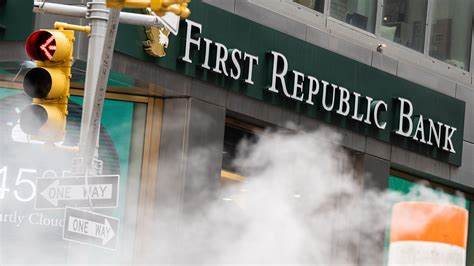First Republic(FRC) Bank no longer exists.
First Republic Bank (FRC), one of the fastest growing major banks in the last decade, has come to an end. The Federal Deposit Insurance Corporation (FDIC) announced early Monday. That JPMorgan Chase had won the auction to purchase the bank’s assets and assume responsibility for all deposits.
First Republic has assets of $229.1 billion and deposits at $103.9 billion. All depositors and borrowers will now bank with JPMorgan as of Monday.
The FDIC announced in a news statement on Monday, “JPMorgan Chase Bank. National Association submitted a bid for all of First Republic Bank’s deposits.” As part of the acquisition, First Republic Bank’s 84 locations in eight states will reopen today during normal business hours. As branches of JPMorgan Chase Bank, National Association. All First Republic Bank depositors will become depositors of JPMorgan Chase Bank. National Association, with full access to all of their deposits.”
The FDIC and JPMorgan engage into a loss-sharing agreement.
The FDIC did not disclose JPMorgan’s winning bid price, although multiple media sites claimed on Sunday that PNC Financial Services (PNC) and Citizens Financial Group (CFG) were also in the race. Bids have been asked by Sunday noon. Bank of America (BAC) and US Bancorp (USB) both declined to make a proposal. Because JPMorgan holds more than 10% of all US deposits, it needed a regulatory waiver on Sunday to assume First Republic deposits.
Moreover The FDIC estimates a $13 billion impact to the Deposit Insurance Fund, which is supported by banks across the United States.
The deal also states that JPMorgan and the FDIC will engage into a loss-sharing arrangement for “single family, residential, and commercial loans.” absorbed by the bank, which should shield JPMorgan if any loans default.
Further First Republic does have a large volume of low-interest-rate residential mortgages, but loan quality is not what caused the company’s problems. The bank run on Silicon Valley Bank in March, which failed in only a few days, also resulted in a massive outflow of depositors from First Republic, which appears to be solely attributable to its headquarters in San Francisco being close to Silicon Valley and sharing some of the same customers. Worried depositors in the Bay Area moved their money away from both banks, mostly to money market funds and larger banks such as Wells Fargo (WFC).
The deposit run left First Republic with a $100 billion shortfall. That could not be filled. be supplied by $30 billion in deposits from 11 big national banks. As well as further borrowing from the Federal Home Loan Bank.
The story is reminiscent of JPMorgan’s involvement in the 2008 Great Financial Crisis. That year, the bank purchased both a failing Bear Stearns investment bank and a failing Washington Mutual.









